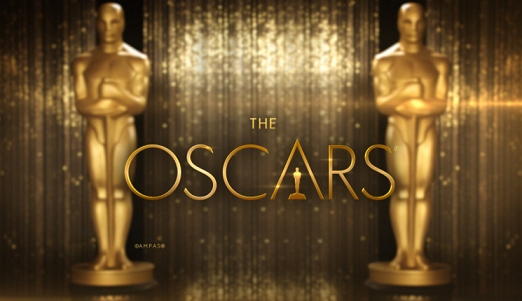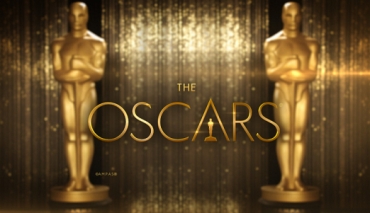
 Can the data behind Exponential’s rich audience profiles predict who will win Best Picture at the Oscars? You bet.
Can the data behind Exponential’s rich audience profiles predict who will win Best Picture at the Oscars? You bet.
But this year? All bets are off. We’ve never seen such a muddled signal in the data, in part because the Oscars themselves have become embroiled in controversy. The outcry over the lack of diversity in this year’s nominations can explain how we make our prediction, and why 2016 might be the last time we try this approach.
Methodology
It’s been four years since the Los Angeles Times revealed the homogeneity of the Oscar voters: (http://www.latimes.com/entertainment/envelope/oscars/la-et-unmasking-oscar-academy-project-20120219-story.html) overwhelmingly Caucasian, overwhelmingly male, and with a median age of 62. Add a qualifier that they work in the entertainment industry in Los Angeles, and it’s easy for us to identify users with this profile in our system. Both the Oscar voters and the users on our network are anonymous, so we can’t be sure to actually capture members of the Academy, but social homophily ensures that people who look like an Oscar voter will usually vote like an Oscar voter.
The nature of big data is that we measure reliable signals that can be passively observed. Unfortunately, this doesn’t often include film preferences. Our narrowly defined profile presents us with an equally small audience – 106,425 users, to be exact. To make a more robust prediction, we compare the full set of characteristics and preferences for our Oscar voters – some 5,168 statistically significant behaviors — against the audience profiles favoring each Best Picture. The closest alignment between the two is our prediction for the Oscar winner.
Controversy
The #OscarSoWhite controversy makes our prediction more difficult. Few people seemed to notice that the Academy voters were older white men until this year. Increased attention and the politicization of the process adds noise to the data and makes voting patterns less predictable. This may serve to benefit The Revenant, easily the most diverse of the Best Picture nominations. And this may be the last year we can use this approach, because Academy has announced changes to ensure its members are younger and more racially diverse.
Bridge Over Troubled Water
Our audience analysis begins with Brooklyn and Bridge of Spies. These films offer the easiest comparison, because their fan bases show little diversity, and there are clearly no Academy voters there.
Counterintuitively, demographics alone might promise a win. Brooklyn has the oldest cohort, with an estimated median age of 67, and the most prominently Caucasian audience. Bridge of Spies is close behind, with the second oldest and the third most Caucasian audience, just short of The Big Short. But looking deeper, it’s clear that neither group aligns with the profile of an Oscar voter.
Those favoring Brooklyn just aren’t that interested in film. They are 24% less likely to follow any movie, the second least interested in film festivals (after fans of The Martian), and 59% less interested in home entertainment. This audience is the most reliant on broadcast television, especially BBC and PBS – and following that, an astounding 80 times more likely to watch “Downton Abbey” than the general population. Setting them even farther afield from Hollywood, Brooklyn fans are the least concerned about water conservation and the least likely to drive or even own a car. No wonder that this movie has the weakest correlation to Los Angeles than any other Oscar nominee.
Brooklyn and Bridge of Spies are set just ten years apart, in 1950 and 1960 respectively, but our data suggests that only the Bridge of Spies audience is feeling personally nostalgic. Not only are the demographics in line, but there’s a strong interest in the armed forces, the defense industry, and even the FBI. This helps identify a cultural divide that distinguishes this audience from the Academy voter. The fan base for Bridge of Spies is conservative in almost every respect. Politically, they support lowering taxes and freezing immigration. Personally, they are 13 times more likely to have considered emergency preparedness. These viewers are the most likely to be cooking red meat in the kitchen, and the least likely to eat at a restaurant. In short, these aren’t Oscar voters either.
Teenagers from Mars
Mad Max and The Martian have the youngest audiences overall, although there’s a surprising amount of diversity in each group. Some viewers in this group are concerned about acne, others about arthritis. In any event, relying on demographics is never enough, and other patterns that rule out these films as well.
At first glance the Mad Max audience seems to mirror everything on the screen, being 4.6 times more interested in pickup trucks and 13.6 times more interested in combat sports. This audience is 7.14 times more likely to be serving in the military, and has the highest percentage of viewers without a college education. But this same group also has the second highest percentage of graduate school alumni (after The Martian) and is the most likely to donate to liberal causes.
What is going on? Basically, for every five fans following the action, there is one person admiring the cinematography. It’s the latter group that would deliver Mad Max a best picture award. Although this subset has similar backgrounds to our Oscar voter, there are too many differences to ignore. These are independent artisans, not movie studio types – highly likely to be architects and contractors, to drive Subarus and Mazdas, and are one of two Best Picture audiences (along with The Room) that would rather attend a music festival than a film festival.
For The Martian, we see a wide variance in income and life stage. Parts of this audience are looking for an apartment to rent, while others are installing solar panels on their second home. What aligns them is education, not only in having the most graduate degrees but also the largest percentage of people working in higher education, information technology, and banking. They are 6.4 times more likely to follow the news but the least interested in celebrities and even Fashion Week. The only clear alignment with our Oscar profile is that both groups are interested in law. We can dismiss these nominees as well.
Gone and Found
Things get much trickier from here, with four Best Picture audiences that are very similar to our Oscar profile. Each one is wealthy, overwhelmingly Caucasian, generally older, and spending heavily on arts and entertainment. But a closer look at our data suggests that neither The Revenant nor Room are likely to garner a win, with a core audience that is out of step with the Academy profile and too few outliers to overcome it.
In the case of the Room, the most telling distinction is that the audience is evenly split by gender. This shouldn’t be surprising, but it is – every other Best Picture audience, and the Academy itself, is dominated by men. This is also the wealthiest and most charitable audience, a pattern we do not find among Oscar voters, and a misconception about them that we often need to correct. Similarly, this audience seems like a stereotype of Los Angeles, being 3.6 times more likely to own an luxury handbag, 9.2 times more likely to own a Tesla, and a striking 20.6 times more likely to be wearing an expensive fashion brand. But this is not the profile of our Oscar voter, even if they cross paths (or traffic jams) often.
As for The Revenant, we again see a small percentage of viewers could be in the Academy, but they are dominated by a much larger fan base that is too conservative and religious to drive a Best Picture winner. This group is 2.8 times more likely to listen Glenn Beck and the second most likely to support Donald Trump, after Mad Max fans. They prefer bourbon to wine, hunting to skiing, and are the most likely to own a diesel truck or a four-wheel drive SUV. An audience 7.7 times more likely to own a power saw and 7 times more likely to work in law enforcement is weighted too heavily to have a sizeable number of Academy voters.
What Does Your Soul Look Like
Picking one of the two nominees left – The Big Short or Spotlight – is incredibly difficult. There is no stronger overlap than between these two audiences, who share almost 95% of the 10,116 behavioral indicators we have identified. This battle, unlike bets on the mortgage crisis, will be won by slim margins.
Most of our indicators favor The Big Short. It is the most heavily favored nominee in Los Angeles and New York City. It is the second most Caucasian audience. It is the top pick of consumers who spend heavily on entertainment, readers who follow celebrities, and users of video editing software. The Big Short fans are a stunning 56.8 times more likely to be reading news about film production. But this audience is also younger and wealthier than our Oscar voters, with a median age of 43 and more millionaires by percentage than any other group. And Spotlight has the edge with film festival attendees, Broadway fans, and those in the television industry.
There are two ways to resolve this impasse. One is to see the ranking of Spotlight and the Big Short among audiences of the films we think will lose. The Academy employs a preferential system that reassigns these votes to second, third, or even fourth preferences. For example, a Brooklyn vote will go to Spotlight if Brooklyn has no chance of winning and the voter identified Spotlight as a second choice. Our data suggests that Spotlight would take the audiences of Brooklyn and Room. The Big Short gets the vote of Bridge of Spies, Mad Max, The Martian, and (although it’s close) The Revenant. Winner, The Big Short.
The second approach, and one we use most often, is an expert analysis of the data by our in-house marketing consultants. The resulting profile of the Oscar voter is deep enough to support an hour-long presentation. We know he (and it is a ‘he’) is a frequent traveler, invests heavily in home theater systems, follows baseball and tennis, is concerned about privacy and Social Security, buys expensive watches, and drives a European luxury car. And the same is true for those who favor Big Short, except in that basketball tops baseball and the cars come from Asian luxury brands. Very little of this holds for the Spotlight fan, who is one-third as likely to invest in home theater and one-eighth as likely to buy an expensive watch. Winner, again, The Big Short.
And The (Real) Winner Is…
Yes, we will be on edge until the ceremony. But taking a step back, this is an odd application of our data. Our system was built to help you connect with your audience, not to predict the preferences of some 6,000 Academy voters. Imagine how much more we could do with a hundred thousand customers interested in your product! Trust me, by March, this will be even more exciting than us predicting Best Picture for one more year.
